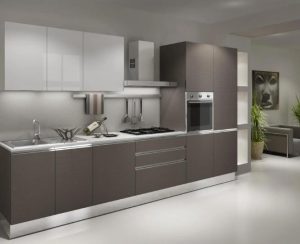Plywood, MDF, and Particle Board are some of the most common materials used in furniture and construction. They all have their own unique characteristics and properties that make them suitable for different purposes. In this article, we will compare and contrast these materials to help you understand their differences and determine which one is best suited for your project.
What is Plywood?
Plywood is a type of engineered wood made from thin layers of wood veneer that are glued together. Each layer of veneer is rotated perpendicular to the previous one, creating a strong and durable sheet of wood. Plywood is available in a variety of grades, sizes, and thicknesses, making it versatile for different applications.
What is MDF?
MDF stands for Medium Density Fiberboard, and it is a type of engineered wood made from wood fibers and resin. The wood fibers are compressed and bonded together under high pressure and temperature, resulting in a dense and uniform board. MDF is often used for furniture, cabinetry, and decorative molding because of its smooth surface and ability to be easily painted or stained.
What is Particle Board?
Particle Board is also an engineered wood product made from wood particles and resin. However, the wood particles used in Particle Board are much smaller than those used in MDF. The smaller particles result in a less uniform board, but it is still strong and durable. Particle Board is commonly used for furniture, flooring, and as a core material for doors.
Differences between Plywood, MDF, and Particle Board
Strength and Durability:
Plywood is known for its strength and durability. It is made from layers of wood veneer that are glued together, creating a strong and sturdy material that can withstand a lot of weight and pressure. MDF and Particle Board, on the other hand, are not as strong as plywood. While they are still durable and strong enough for most applications, they are not recommended for use in areas where a lot of weight or pressure will be applied.
Appearance:
Plywood has a natural wood grain appearance, and it can be stained or painted to match the surrounding decor. MDF and Particle Board, on the other hand, have a smooth surface that can be painted or stained to achieve a desired look. MDF is known for its ability to be easily painted, and it is often used for furniture and cabinetry because of its uniform appearance.
Cost:
Plywood is generally more expensive than MDF and Particle Board. This is because plywood is made from natural wood veneer, which is more expensive than the wood fibers and particles used in MDF and Particle Board. However, the cost difference may be worth it for applications where strength and durability are essential.
Water Resistance:
Plywood is known for its water resistance, making it a popular choice for use in areas where moisture is present. MDF and Particle Board, on the other hand, are not as water-resistant as plywood. While they can be used in areas with minimal moisture, they are not recommended for use in areas with high humidity or where they will be exposed to water.
Which one is best for your project?
The choice between Plywood, MDF, and Particle Board depends on your specific project and requirements. If you need a strong and durable material that can withstand a lot of weight and pressure, plywood is the best choice. If you need a material that can be easily painted or stained and has a smooth surface, MDF is the best choice. If cost is a major factor in your decision, Particle Board is the most affordable option.
In conclusion, Plywood, MDF, and Particle Board are all useful materials that have their own unique characteristics and properties. Understanding the differences between these materials can help you make informed decisions when selecting the best material for your project. It’s important to consider factors such as strength, appearance, cost, and water resistance to ensure that the material you choose is the right one for your needs.
When it comes to furniture and cabinetry, MDF is often the material of choice due to its uniform appearance and smooth surface. MDF can be easily painted and is available in a range of thicknesses, making it versatile for various applications.
On the other hand, if you need a material that can withstand a lot of weight and pressure, plywood is the best choice. It’s ideal for structural applications such as flooring, roofing, and sheathing. Plywood is also resistant to warping and shrinking, which makes it a popular choice for outdoor furniture and construction.
Particle Board is the most affordable option of the three, making it a great choice for budget-conscious projects. However, it’s important to note that Particle Board is not as strong or durable as Plywood or MDF, and it’s not recommended for use in areas with high humidity or moisture.
When it comes to selecting the best material for your project, it’s important to consider your budget, the specific application, and the desired appearance. While Plywood, MDF, and Particle Board all have their own unique characteristics and properties, choosing the right one for your project can help ensure its success and longevity.
In conclusion, Plywood, MDF, and Particle Board all have their own strengths and weaknesses, and understanding the differences between them is essential in making an informed decision. Whether you need a strong and durable material or one that has a smooth and uniform appearance, there is a material that is suitable for your needs. By considering factors such as strength, appearance, cost, and water resistance, you can select the best material for your project and ensure its success.




